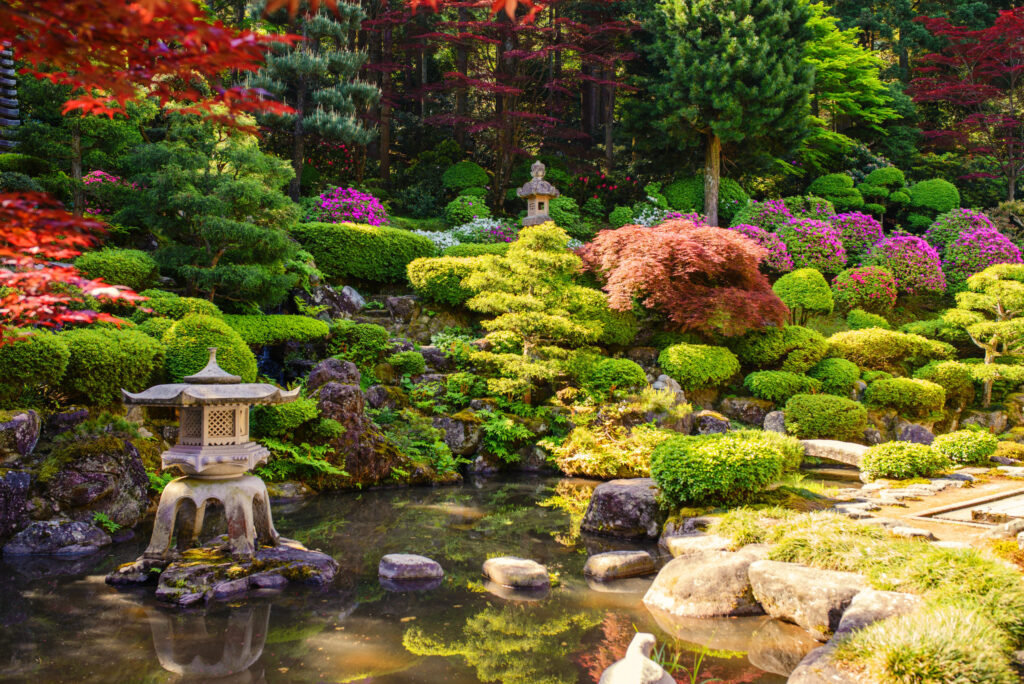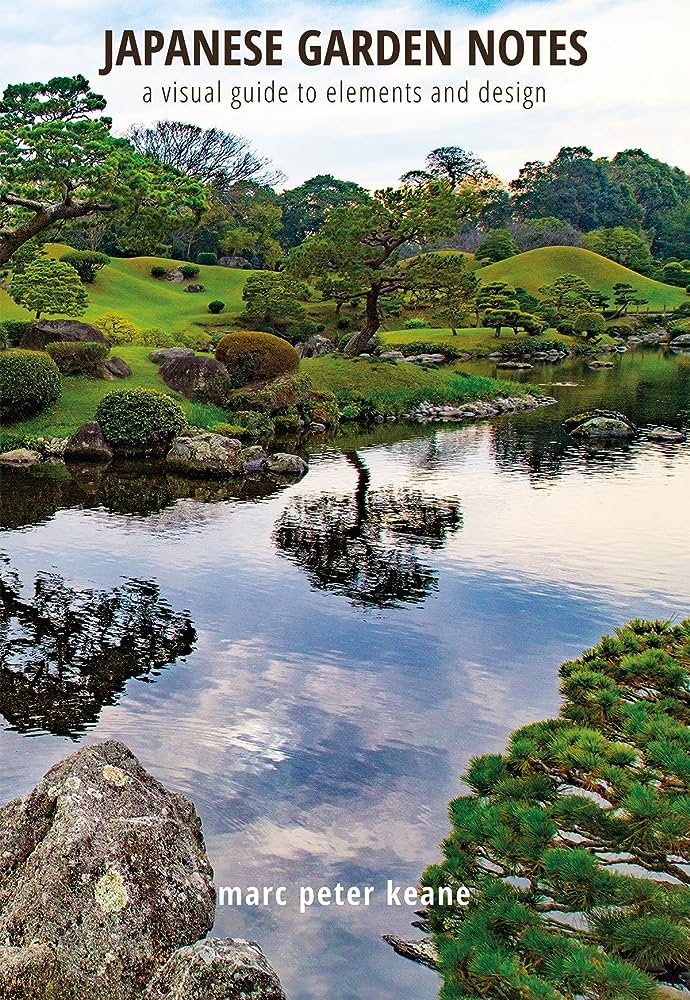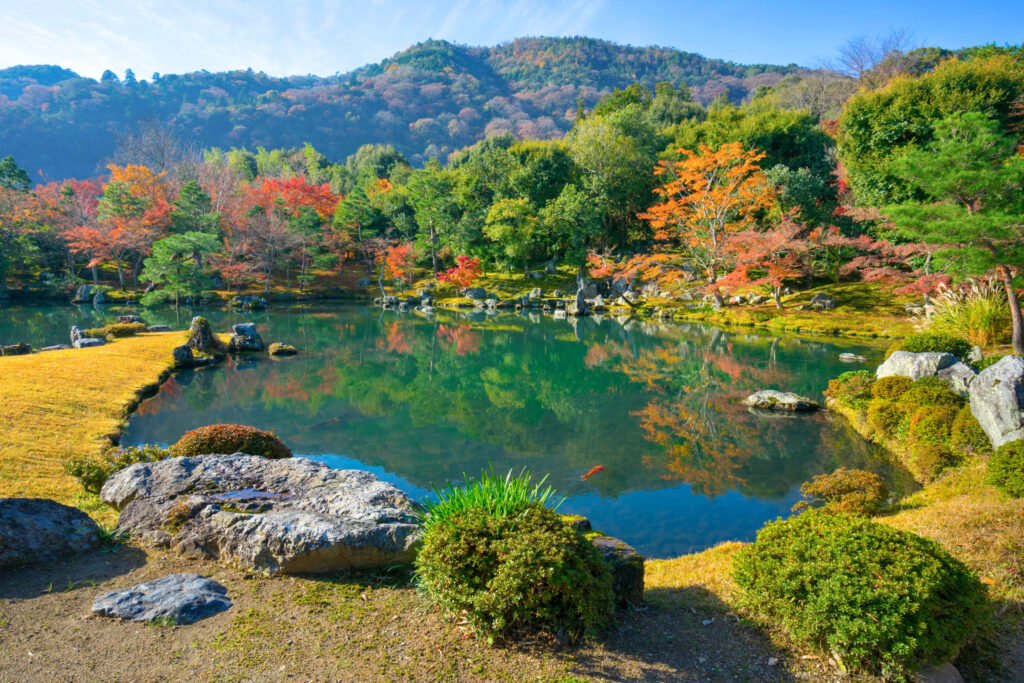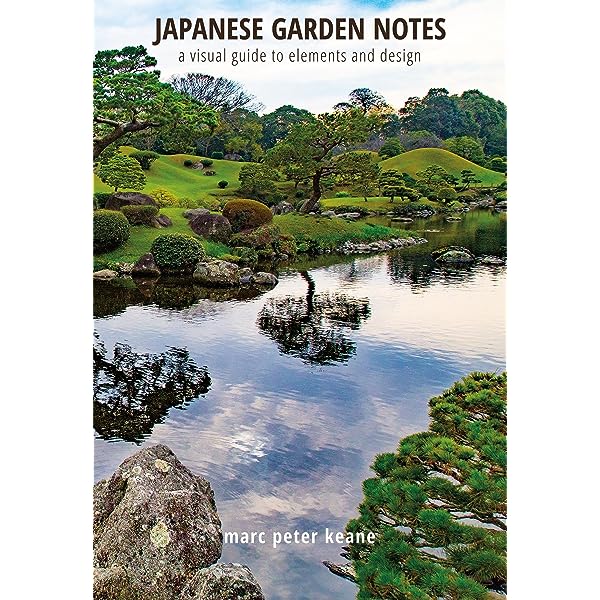Are you curious about the serene beauty and timeless elegance of Japanese gardens? Look no further – this article is your ultimate guide to understanding the history, elements, and design principles that make Japanese gardens truly unique. Embark on a fascinating journey through the centuries as you discover the origins and evolution of these enchanting outdoor spaces. Explore the essential elements that bring harmony and tranquility to Japanese gardens, from meticulously pruned plants to carefully placed stones. Uncover the design principles that guide the creation of these serene havens, allowing you to bring a touch of Japan’s natural beauty into your own surroundings. Get ready to immerse yourself in the captivating world of Japanese gardens and unleash your inner Zen.

This image is property of www.patternz.jp.
I. History of Japanese Gardens
A. Origins of Japanese Gardens
Japanese gardens have a rich history that goes back centuries. The origins of these gardens can be traced back to the Asuka period (538-710) in Japan. During this time, the influence of Chinese garden design started to shape the development of Japanese gardens.
B. Influence of China
Chinese garden design greatly influenced the early development of Japanese gardens. The principles of symmetry, balance, and harmony with nature were introduced, laying the foundation for the distinctive style of Japanese gardens.
C. Zen Buddhism
The introduction of Zen Buddhism to Japan in the 12th century had a profound impact on the development of Japanese gardens. Zen philosophy emphasizes simplicity, tranquility, and the appreciation of natural beauty, which became key elements in the design of Japanese gardens.
D. Edo Period
During the Edo period (1603-1868), Japanese gardens underwent significant changes. The ruling samurai class embraced these gardens as a way to showcase their power and wealth. As a result, grandiose gardens with large ponds, bridges, and carefully manicured trees became popular.
E. Meiji Restoration and Modernization
During the Meiji Restoration in the late 19th century, Japan experienced a period of modernization and Western influence. This had an impact on Japanese garden design, with some gardens incorporating Western-style features and principles.
II. Elements of Japanese Gardens
A. Rocks and Stones
Rocks and stones play a crucial role in Japanese garden design. They are carefully selected and placed to create a sense of harmony and balance. Large rocks represent mountains, while smaller stones symbolize islands in the garden’s miniature landscape.
B. Water Features
Water is a fundamental element in Japanese gardens, representing purity and tranquility. Ponds, streams, and waterfalls are common features, and they are carefully designed to create a sense of calmness and serenity.
C. Bridges
Bridges are not only functional but also serve as design elements in Japanese gardens. They act as a symbolic transition between different areas of the garden, often leading to a focal point or a hidden view. Bridges are typically made of wood or stone and are designed to blend seamlessly with their surroundings.
D. Lanterns
Lanterns are an iconic feature of Japanese gardens, adding a touch of elegance and providing subtle illumination during evenings. They come in various shapes and sizes, and their placement is carefully considered to highlight important elements or pathways within the garden.
E. Plants and Trees
The choice of plants and trees in Japanese gardens is deliberate and purposeful. Evergreen trees, such as pine and bamboo, symbolize longevity and resilience. Cherry blossoms, maple trees, and other colorful flowering plants are often included to provide seasonal beauty and create a harmonious blend of colors.

This image is property of Amazon.com.
III. Design Principles in Japanese Gardens
A. Wabi-sabi
Wabi-sabi is a central principle in Japanese aesthetics and is often embraced in Japanese garden design. It appreciates the beauty of imperfection, asymmetry, and the transient nature of things. Wabi-sabi encourages the acceptance of natural flaws and emphasizes simplicity, creating a sense of rustic beauty in the garden.
B. Ma
Ma refers to the concept of negative space or the void in Japanese gardens. It is the deliberate inclusion of empty spaces to create a sense of balance and harmony. Ma allows for contemplation and gives prominence to the elements that surround it, enhancing the overall aesthetic appeal of the garden.
C. Yohaku-no-bi
Yohaku-no-bi, which translates to “the beauty of empty space,” is another design principle in Japanese gardens. It emphasizes the careful arrangement of elements to create a sense of spaciousness and tranquility. Yohaku-no-bi involves selective pruning, creating open views, and using sparse plantings to highlight simplicity and elegance.
D. Shakkei
Shakkei, or borrowed scenery, is a technique used in Japanese garden design to incorporate the surrounding landscape into the garden’s composition. This technique allows the garden to extend beyond its boundaries, seamlessly blending with the natural surroundings and creating a sense of harmony between the man-made and the natural.
E. Asymmetry
Asymmetry is a key characteristic of Japanese garden design. Instead of strict symmetry, which is common in many Western gardens, Japanese gardens embrace asymmetry to create a sense of naturalness and informality. This design principle reflects the belief that perfect symmetry is artificial and that nature is inherently irregular.
IV. Styles of Japanese Gardens
A. Tsukiyama Gardens
Tsukiyama gardens are characterized by their use of artificial hills, rocks, and ponds to mimic natural landscapes. They often feature carefully sculpted hills with winding paths, creating a sense of exploration and discovery within the garden.
B. Karesansui Gardens
Karesansui, or dry landscape gardens, are minimalist and abstract in design. They use rocks, gravel, and raked patterns to represent water, islands, and mountains. These gardens often evoke a sense of tranquility and invite contemplation.
C. Chaniwa Gardens
Chaniwa, or tea gardens, are designed specifically for tea ceremonies. These gardens incorporate elements such as stepping stones, lanterns, and water features to create a serene and harmonious atmosphere for the tea ceremony.
D. Roji Gardens
Roji gardens are the entrance gardens to tea houses and are meant to prepare guests for the tea ceremony. They often feature stone paths, simple plantings, and bamboo gates, creating a sense of transition and leading guests to a place of inner calmness.
E. Tsuboniwa Gardens
Tsuboniwa gardens are tiny courtyard gardens typically found in urban settings. They are designed to provide a peaceful retreat in limited spaces. Tsuboniwa gardens often incorporate miniature landscapes, carefully selected plants, and stone features to create a serene and intimate space.

This image is property of www.patternz.jp.
V. Famous Japanese Gardens
A. Katsura Imperial Villa Garden
The Katsura Imperial Villa Garden in Kyoto is one of Japan’s most famous gardens. It showcases a blend of natural scenery and carefully designed elements, including ponds, bridges, teahouses, and meticulously pruned trees. The garden is a masterpiece of Japanese garden design and has influenced many subsequent gardens.
B. Kenroku-en Garden
Kenroku-en Garden in Kanazawa is considered one of the Three Great Gardens of Japan. It features a large pond, expansive lawns, winding paths, and seasonal flower displays. Kenroku-en is celebrated for its beautiful cherry blossoms in spring and vibrant foliage in autumn.
C. Ryoan-ji Garden
Ryoan-ji Garden in Kyoto is renowned for its minimalist design and famous Zen rock garden. The garden comprises of 15 carefully placed rocks on a bed of white gravel, which is raked daily to maintain its pristine appearance. Ryoan-ji is a place for meditation and contemplation.
D. Adachi Museum of Art Garden
The Adachi Museum of Art Garden in Shimane is considered one of the finest contemporary Japanese gardens. It seamlessly integrates art, nature, and the surrounding landscapes. The garden offers different vistas and scenic views from various locations within the museum.
E. Koraku-en Garden
Koraku-en Garden in Okayama is another of Japan’s Three Great Gardens. It is known for its spaciousness and diverse landscaping, featuring ponds, hills, groves, and traditional teahouses. Koraku-en is especially beautiful during cherry blossom season, attracting visitors from all over Japan.
VI. Creating a Japanese Garden
A. Site Selection and Layout
When creating a Japanese garden, careful consideration must be given to the site and its surroundings. The layout should take into account the natural features, such as existing trees, slopes, and water sources. The placement of paths, structures, and key elements should be thoughtfully planned to enhance the overall flow and aesthetic appeal.
B. Incorporating Natural Elements
To create an authentic Japanese garden, it is essential to incorporate natural elements such as rocks, water features, and plantings. The selection and placement of rocks should reflect the desired mood and style of the garden. Water features, such as ponds or streams, can be designed to mimic natural water sources. Plantings should be chosen based on their suitability to the climate and the desired look and feel of the garden.
C. Plant Selection and Arrangement
Japanese gardens often favor a limited selection of plants, emphasizing the beauty of individual specimens. Evergreen trees, such as pine and bamboo, are commonly used for their symbolisms and year-round beauty. The arrangement of plants should consider factors such as color, texture, and seasonal interest to create a harmonious and visually appealing composition.
D. Water Features and Bridges
Water features, such as ponds, streams, and waterfalls, should be carefully designed to complement the overall aesthetic of the garden. The sound and movement of water contribute to a serene and tranquil atmosphere. Bridges, whether functional or decorative, should be chosen to blend harmoniously with the surrounding landscape and provide an interesting focal point.
E. Maintenance and Care
Japanese gardens require regular maintenance and care to preserve their beauty and design. Pruning, raking, and trimming are essential to maintain the desired shapes and forms of trees and plants. Regular cleaning and upkeep of water features, bridges, and paths are necessary to prevent algae growth and maintain safety. A deep understanding of the garden’s design principles and proper care techniques is crucial for its longevity.

This image is property of agriculturalmagazine.com.
VII. Cultural Significance of Japanese Gardens
A. Expressing Harmony with Nature
Japanese gardens are deeply rooted in the concept of harmonizing with nature. They invite visitors to appreciate and connect with the natural world, offering a sense of calmness and introspection. The careful arrangement of elements and the use of natural materials contribute to the overall sense of tranquility and balance.
B. Reflection of Zen Buddhism
Japanese gardens often serve as places for meditation and reflection, reflecting the influence of Zen Buddhism. The simplicity, minimalism, and contemplative atmosphere of these gardens create a space for individuals to find inner peace and clarity. The design principles of Japanese gardens align with the principles of Zen philosophy, emphasizing mindfulness and being present in the moment.
C. Symbolism and Meaning
Japanese gardens incorporate symbolism and meaning in their design elements. Rocks and stones can represent mountains or islands, while water features symbolize purity and renewal. Bamboo and pine trees represent longevity and resilience, while cherry blossoms evoke the transient nature of life. These symbolic elements add depth and significance to the overall design.
D. Role in Tea Ceremonies
Japanese gardens often play a crucial role in the traditional Japanese tea ceremony. Tea houses are typically located within the garden, and the design of the garden itself creates a serene and harmonious setting for the ceremony. The principles of simplicity, tranquility, and mindfulness that are inherent in Japanese gardens align with the ethos of the tea ceremony.
E. Connection to Japanese Aesthetics
Japanese gardens are an expression of Japanese aesthetics, highlighting the beauty of imperfection, asymmetry, and the appreciation of fleeting moments. They embody the concepts of wabi-sabi and yohaku-no-bi, embracing the beauty of simplicity and empty space. Japanese gardens have had a profound influence on Japanese art, design, and architecture, and continue to inspire artists and designers around the world.
VIII. Contemporary Japanese Garden Design
A. Fusion of Tradition and Modernity
Contemporary Japanese garden design explores the fusion of traditional elements with modern styles and materials. Designers experiment with unconventional layouts, materials, and plants while still honoring the essential principles of Japanese garden design. This approach creates unique and innovative spaces that reflect the evolving nature of Japanese culture.
B. Sustainable and Eco-friendly Approaches
There is a growing emphasis on sustainability and eco-friendliness in contemporary Japanese garden design. Designers strive to create gardens that minimize environmental impact by incorporating native plants, using water-efficient irrigation systems, and employing eco-friendly construction materials. These gardens serve as models for sustainable landscapes and conservation efforts.
C. Adaptation to Different Climates
Japanese garden design has evolved to adapt to different climates around the world. While the principles and aesthetics remain consistent, certain changes are made to accommodate local conditions. Plants and materials are carefully selected based on their suitability to the climate, ensuring the longevity and success of the garden.
D. Influence on Western Garden Design
Japanese gardens have had a significant influence on Western garden design, particularly in the concept of creating a harmonious and tranquil space. The principles of simplicity, asymmetry, and the integration of natural elements have been embraced by Western gardeners, resulting in the creation of Japanese-inspired gardens around the world.
E. Public and Urban Japanese Gardens
Japanese gardens are not limited to private spaces but can also be found in public parks and urban areas. These gardens provide havens for relaxation and contemplation in bustling city environments. They offer a break from the fast pace of urban life and provide an opportunity for people to connect with nature and find solace in the beauty of Japanese garden design.

This image is property of Amazon.com.
IX. Tips for Visiting and Appreciating Japanese Gardens
A. Take Time to Slow Down
When visiting a Japanese garden, it is important to take the time to slow down and fully immerse yourself in the experience. Japanese gardens are designed to be enjoyed at a leisurely pace, allowing visitors to appreciate their beauty and tranquility. Take breaks, sit on a bench, and allow yourself to be present in the moment.
B. Observe the Design Elements
Pay attention to the various design elements in the garden, such as rocks, water features, and plants. Observe how they are meticulously placed and arranged, and how they interact with each other. Appreciating the thought and intention behind these design elements will enhance your understanding and enjoyment of the garden.
C. Practice Mindfulness
Japanese gardens offer an opportunity for mindfulness and quiet introspection. As you walk through the garden, practice being fully present in the moment. Engage your senses – feel the texture of the rocks, listen to the sound of water, and smell the fragrant flowers. Allow yourself to be fully engaged with the beauty and tranquility of the garden.
D. Respect the Rules and Traditions
When visiting a Japanese garden, it is important to respect the rules and traditions that govern the space. Follow any posted signs or guidelines regarding photography, noise levels, and appropriate behavior. Be mindful of other visitors and be considerate of the peaceful atmosphere of the garden.
E. Capture the Essence through Photography
Japanese gardens offer stunning visual compositions that are perfect for photography. However, it is important to capture the essence and mood of the garden rather than focusing solely on individual elements. Look for unique perspectives, interesting angles, and ways to convey the serenity and tranquility of the space through your photographs.
X. Conclusion
A. Summarize the Beauty and Significance of Japanese Gardens
Japanese gardens are a testament to the beauty and significance of the natural world. They embody harmony, tranquility, and an appreciation for the subtle moments of life. From their origins in ancient China to the modern interpretations, Japanese gardens continue to inspire and captivate people around the world.
B. Encourage Further Exploration and Appreciation
The world of Japanese gardens is vast and diverse, with countless variations and interpretations. Each garden tells a unique story and offers a different experience. Encourage readers to explore and appreciate these gardens firsthand, whether by visiting famous gardens or creating their own miniature Japanese garden. The beauty and serenity of Japanese gardens await those who are willing to embark on this timeless journey.

